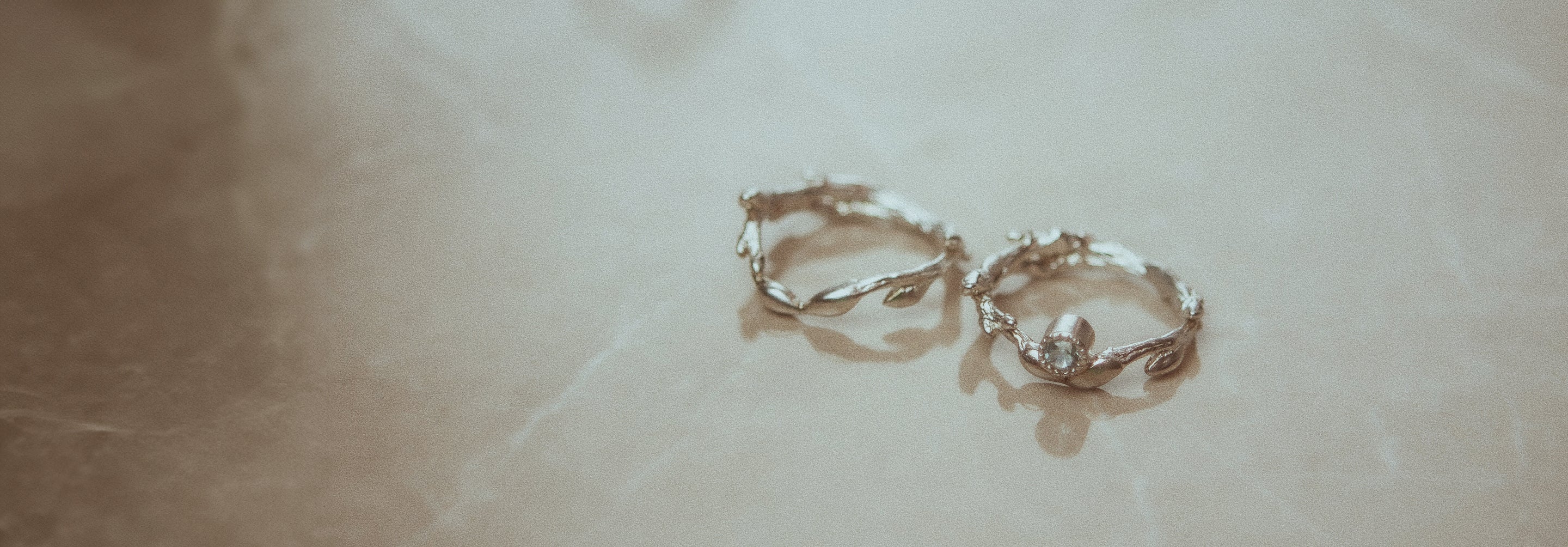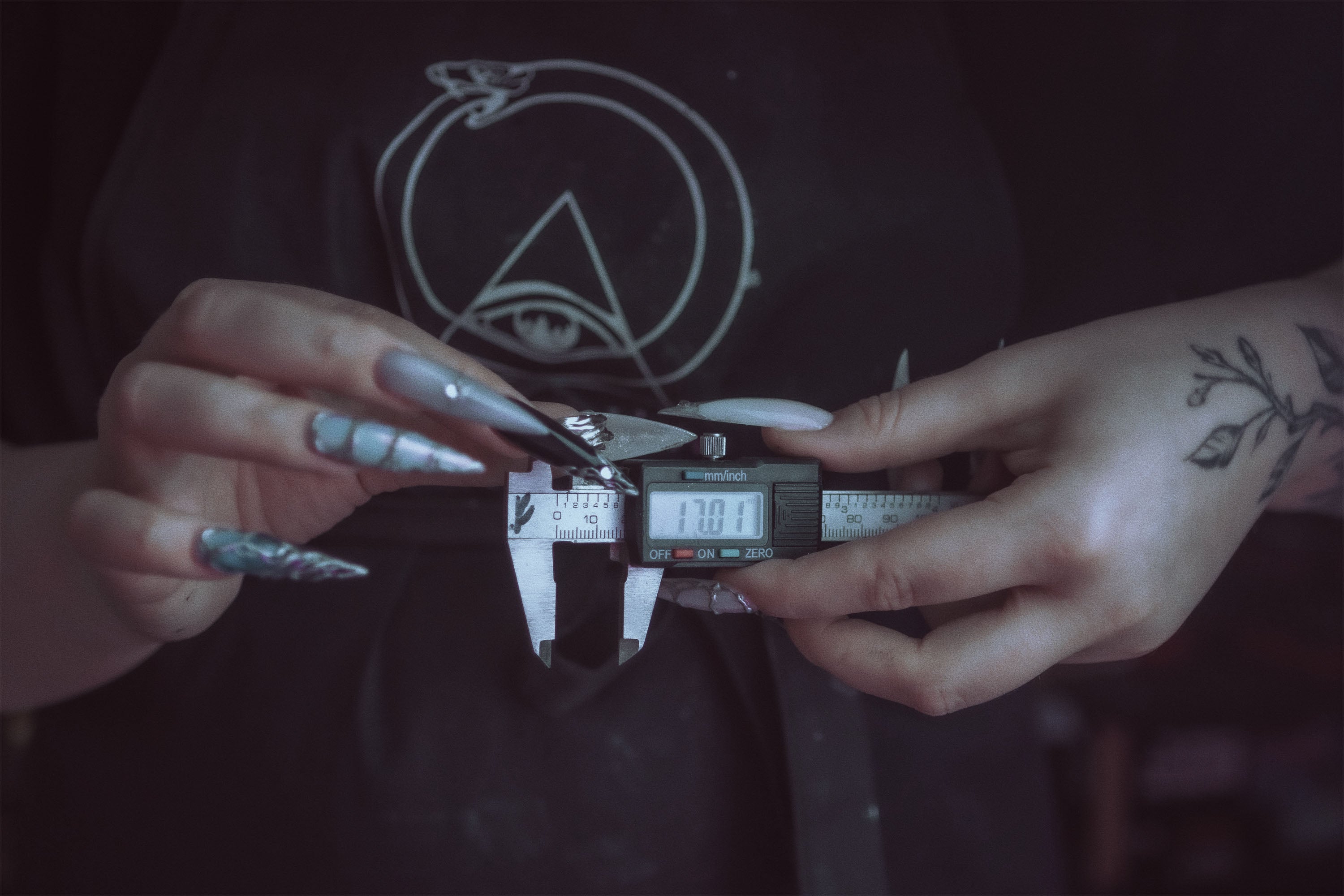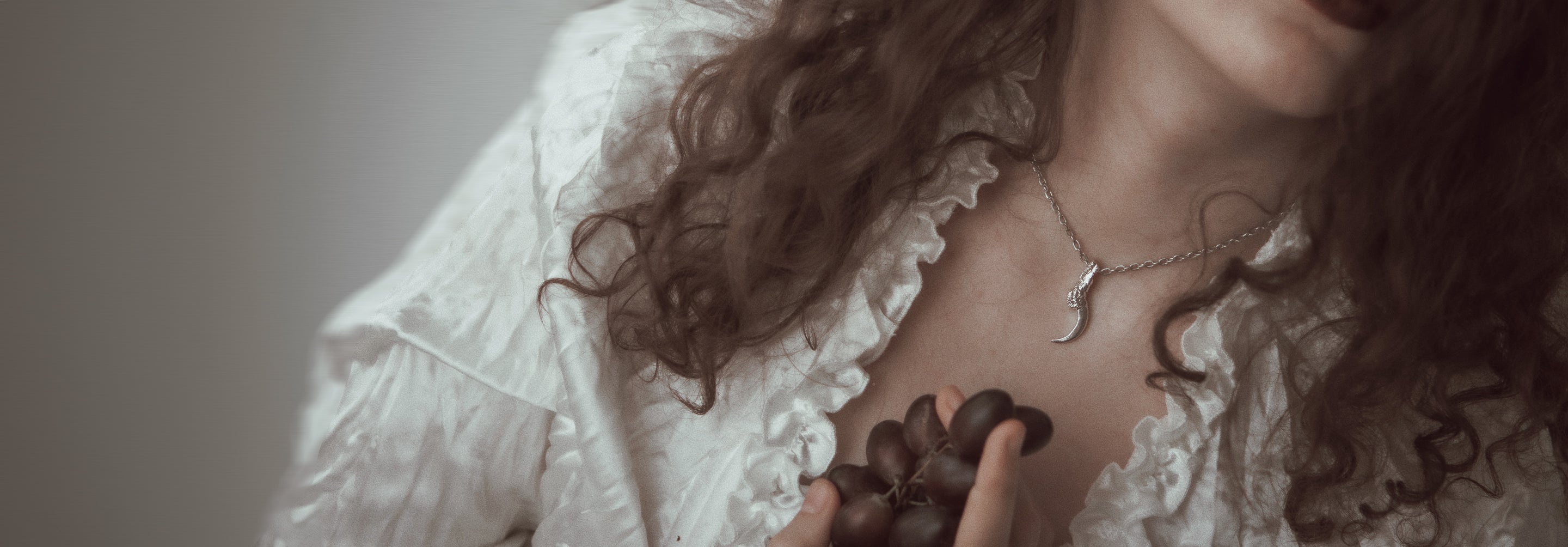
Silver Coating: Rhodium, Gold Plating, Oxidation. Which coating to choose?
Silver jewelry has a natural, remarkable color, but coatings allow for experimentation with its appearance to match various tastes and technical preferences of both the artist and client. I typically use five coating options:
1. White Rhodium
2. Black Rhodium
3. Gold Plating
4. Oxidation
5. Leave the Natural Color - No Coating
 WHITE RHODIUM
WHITE RHODIUM
Rhodium, like silver, is a metal, belonging to the platinum group—extremely durable metals. Rhodium stands out from silver as it is stronger and has a cooler tone. An interesting jewelry secret is that white gold jewelry is ALWAYS coated with white rhodium. This is what gives white gold its distinct white color. Genuine white gold often has a yellowish tint due to the alloy, so if you want the look without the cost, you can opt for silver with white rhodium coating - it looks identical but costs significantly less.
Rhodium is a hypoallergenic metal. If you are allergic to sterling silver (925 silver), it is always coated with rhodium. Rhodium completely isolates the silver surface, preventing contact with the skin and thus avoiding allergic reactions and tarnishing.
Summary:
1. Rhodium gives silver a cooler tone.
2. Isolates the surface of the jewelry, preventing contact with the skin, avoiding allergic reactions, and tarnishing.
3. The thin layer of rhodium, being a robust metal, enhances the wear resistance of the piece, making it less prone to scratches and abrasions.
When to choose rhodium coating:
- When you want a piece with a whiter or cooler color.
- When you want to make the jewelry hypoallergenic.
- To increase resistance to mechanical impact and tarnishing.

BLACK RHODIUM
Properties of black rhodium are identical to white rhodium, with the only difference being the color. Black rhodium imparts a dark graphite or practically black color to the jewelry.

GOLD PLATING
Gold plating involves applying a thin layer of yellow gold onto the surface of the jewelry. It also isolates the silver surface from contact with the skin, giving it a visually similar appearance to gold.
This coating is often used as an alternative to expensive gold jewelry. I recommend choosing gold plating if you are contemplating buying a gold piece but are unsure if you will enjoy wearing this metal. Silver with gold plating allows you to have a trial period with a gold-colored ornament to determine if it suits you.

OXIDATION
Oxidation is my favorite coating for jewelry. I never tire of praising it because it allows for an unparalleled monochromatic finish, emphasizes relief, enhances the Gothic note, and medieval craftsmanship in the work. Oxidation chemically oxidizes silver to an almost black color. I leave the dark color in recesses and remove it from raised areas, resulting in incredible contrast and a well-defined relief or pattern on the surface.
Additionally, this coating behaves excellently in the long term - over time, the dark color intensifies in recesses and naturally polishes on raised areas, making the piece even more contrasting.

WITHOUT COATING
I often leave pieces without coating, embracing the natural silver color. The pure silver hue pairs best with dark stones, creating a contrasting look where the metal surface accentuates the depth of the stone's color.
Uncoated pieces appear luxurious and aesthetic, rivaling other coatings. However, it's crucial to understand that an uncoated item will tarnish over time due to exposure to the environment. To prevent this, periodic wiping with a soft fabric, which I include with every order, helps maintain the brilliance.
I also provide a 1 year guarantee on each piece, which includes free professional cleaning. Occasionally, you may want to clean the piece with a soft brush and mild soap (e.g., baby soap). Following these rules and proper care ensures your item stays untarnished.
And, of course, wearing your jewelry regularly facilitates natural surface polishing.
Now for the less pleasant news:
Unfortunately, every coating wears off over time. It's just how physics and metal chemistry work. The lifespan of coatings varies and depends on numerous factors: how often you wear the item, how carefully you handle it, where on your body it's worn, and even the air quality in your region. Yes, it's that individual.
Even individual reactions to the metal and coating play a role, so the wear term can fluctuate between a year and up to 7 years. But these are approximate figures.
Coatings wear off faster on pieces worn frequently and in direct contact with your skin, like rings where the coating may wear faster than on pendants or earrings.
Great news!
If you follow the rules for caring for your jewelry, the coating will bring you joy for a long time! So don't forget about proper care for your pieces and enjoy their beauty :)
P.S. With each piece of jewelry, you'll receive a letter with care recommendations. Additionally, you can read an in-depth article on this topic.

